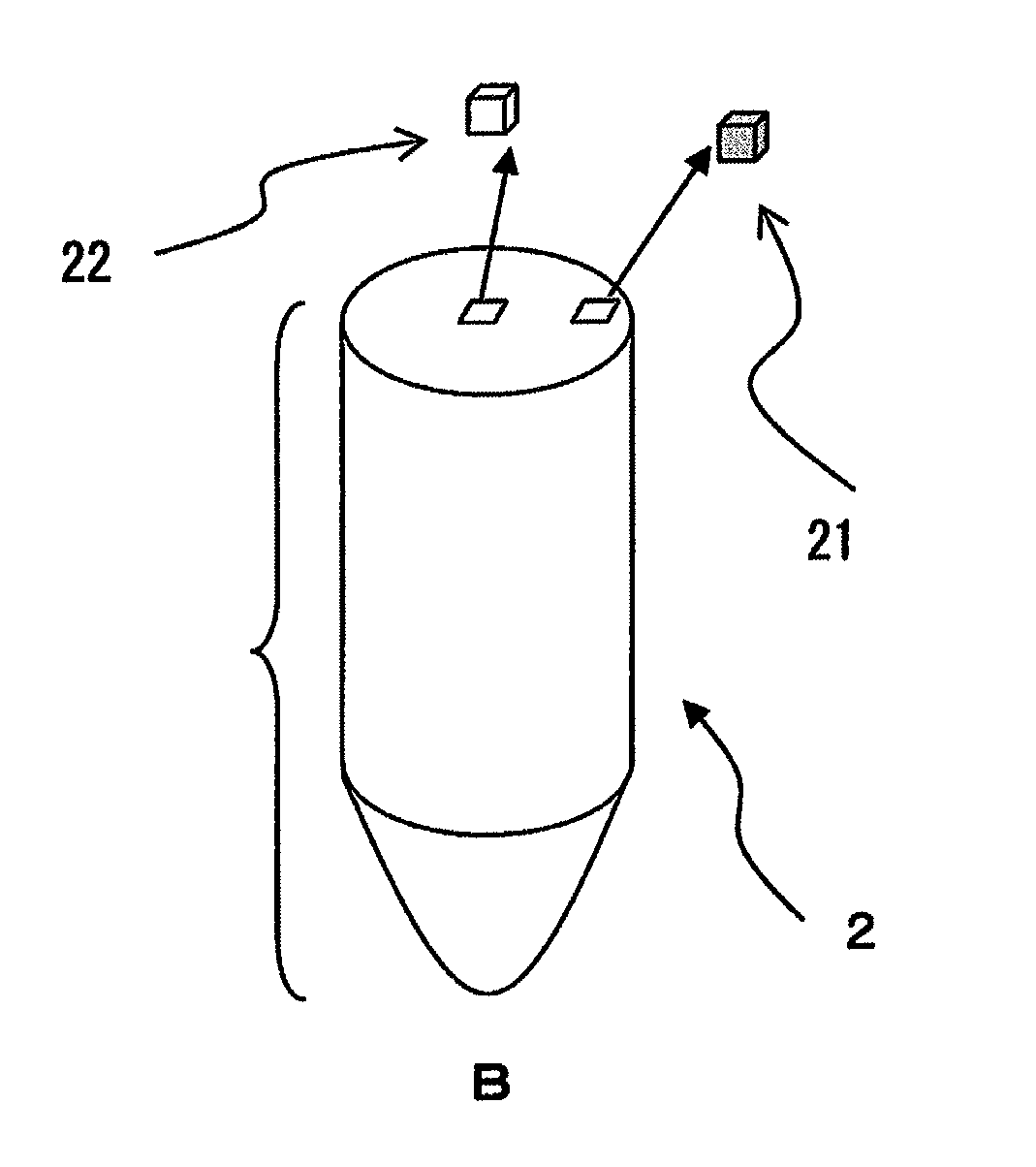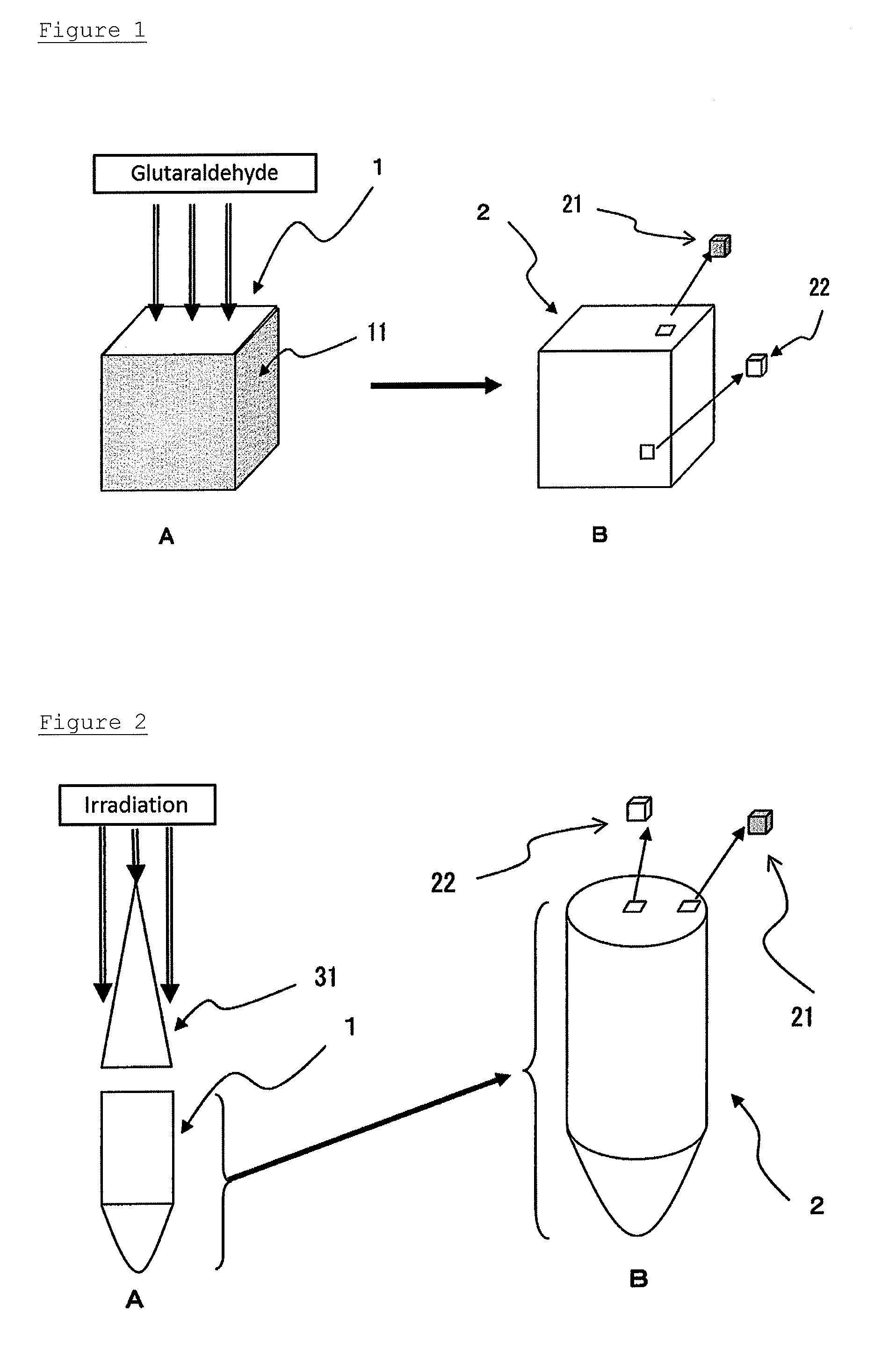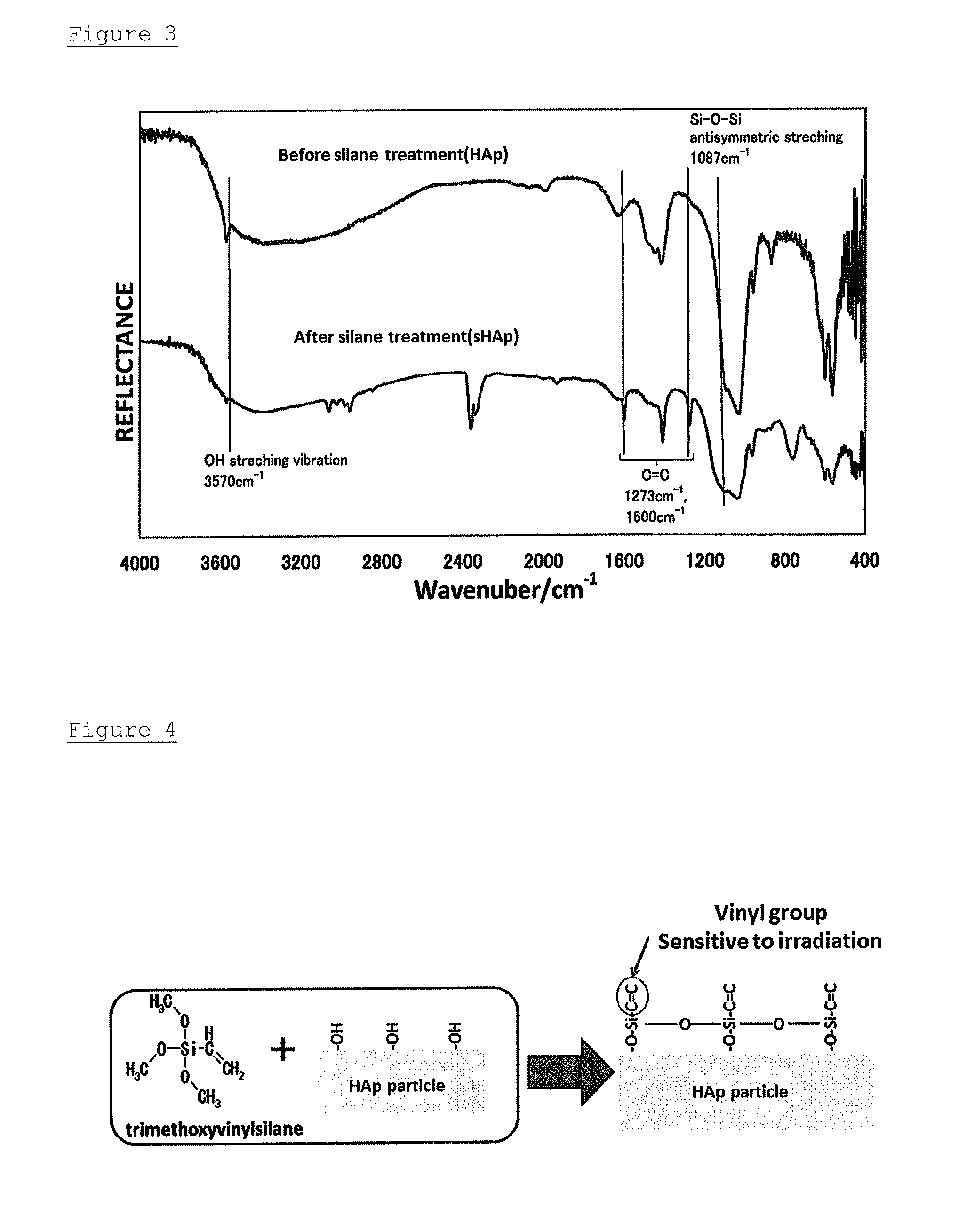Porous composite with graded bioabsorbability, artificial bone using the same, and manufacturing method thereof
- Summary
- Abstract
- Description
- Claims
- Application Information
AI Technical Summary
Benefits of technology
Problems solved by technology
Method used
Image
Examples
example 1
Example 1
[0131]In this example, the porous composite with gradient bioabsorbability was manufactured by the glutaraldehyde vapor deposition method.
(i) Preparation of the Hydroxyapatite Crystal Suspension
[0132]The hydroxyapatite crystal is synthesized through the wet method. 0.6 mol / L of phosphoric acid solution (2 litters) was slowly dropped into 0.5 mol / L of calcium hydroxide suspension (4 litters) until becoming pH7.5. The resulting suspension was dried at 120° C., and then calcined at 1200° C., for 30 minutes using an electrical furnace. It was confirmed that the synthesized hydroxyapatite was single phase by measuring powder X-ray diffraction.
(ii) Preparation of the Collagen Fiber Suspension
[0133]A tilapia scale collagen was dissolved to a concentration of 1% by weight of tilapia scale collagen with hydrochloric acid solution (pH4.0). A buffer (PB) was prepared by mixing 0.1 mol / L of sodium hydrogenphosphate solution with 0.1 mol / L of monobasic sodium phosphate so that the pH wa...
example 2
[0137]In this example, the porous composite swelled was manufactured by irradiation.
(i) Preparation of Hydroxyapatite Crystal Suspension and Introduction of Vinyl Group Thereto
[0138]The hydroxyapatite crystal is synthesized through the wet method. 0.6 mol / L of phosphoric acid solution (2 litters) was slowly dropped into 0.5 mol / L of a calcium hydroxide suspension (4 liters) until it reached pH7.5. The resulting suspension was dried at 120° C., and then calcined at 1200° C., for 30 minutes using an electrical furnace. It was confirmed that the synthesized hydroxyapatite was single phase by measuring powder X-ray diffraction.
[0139]The introduction of the vinyl group was performed as follows.
[0140]The hydroxyapatite suspension was centrifuged so that a precipitate was separated from a liquid, and then ethanol was added to the precipitate. The hydroxyapatite suspension (60 mg / mL) was prepared by repeating the above procedure. On the other hand, trimethoxyvinylsilane was added to purifie...
example 3
(i) Preparation of Hydroxyapatite-Collagen Composite Fiber
[0145]200 mL of collagen solution wherein 2.0 g of tilapia scale collagen was dissolved in a phosphoric acid solution (0.15 mol / L), and 200 mL of 0.5 mol / L of a calcium hydroxide suspension (0.25 mol / L) were prepared. 200 mL of purified water were charged to a 1000 mL volume of a beaker. The prepared collagen solution and calcium hydroxide suspension were simultaneously added to the purified water of 25° C., at 4 mL / min of drip rate, so that the pH was pH8.0±0.5. After dropping, a supernatant was removed by suction filtration. The resulting hydroxyapatite-collagen composite fiber was frozen at −20° C., ant then freeze-dried. According to the results of the differential thermal analysis (TG-DTA) of the freeze-dried composite fiber, the weight ratio of the hydroxyapatite and the collagen was 8:2.
(ii) Preparation of Hydroxyapatite-Collagen Composite Fiber Gel and Forming Thereof
[0146]4 mL of phosphate-buffered saline (0.1 mol / L,...
PUM
| Property | Measurement | Unit |
|---|---|---|
| Length | aaaaa | aaaaa |
| Fraction | aaaaa | aaaaa |
| Time | aaaaa | aaaaa |
Abstract
Description
Claims
Application Information
 Login to View More
Login to View More - R&D
- Intellectual Property
- Life Sciences
- Materials
- Tech Scout
- Unparalleled Data Quality
- Higher Quality Content
- 60% Fewer Hallucinations
Browse by: Latest US Patents, China's latest patents, Technical Efficacy Thesaurus, Application Domain, Technology Topic, Popular Technical Reports.
© 2025 PatSnap. All rights reserved.Legal|Privacy policy|Modern Slavery Act Transparency Statement|Sitemap|About US| Contact US: help@patsnap.com



